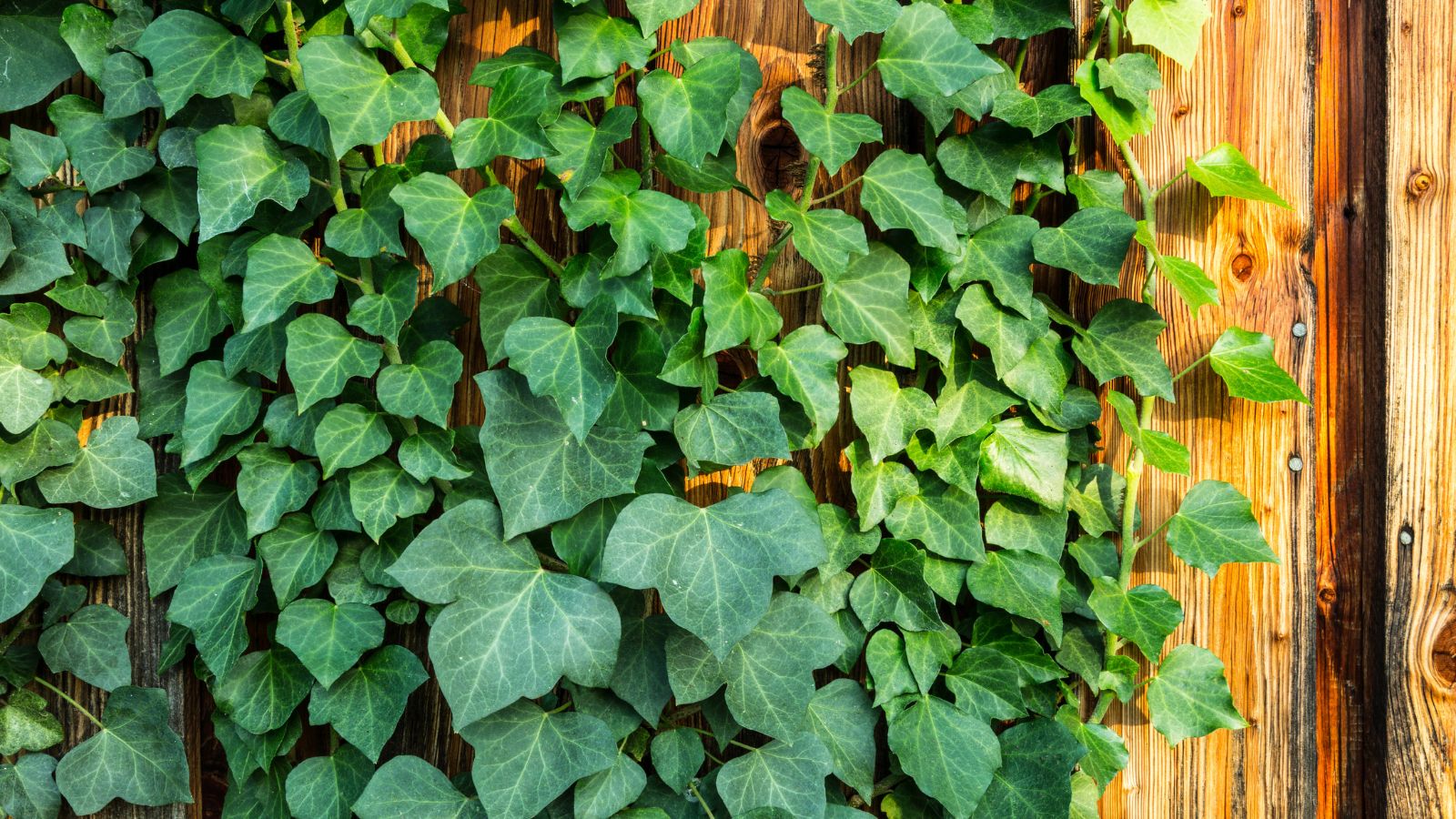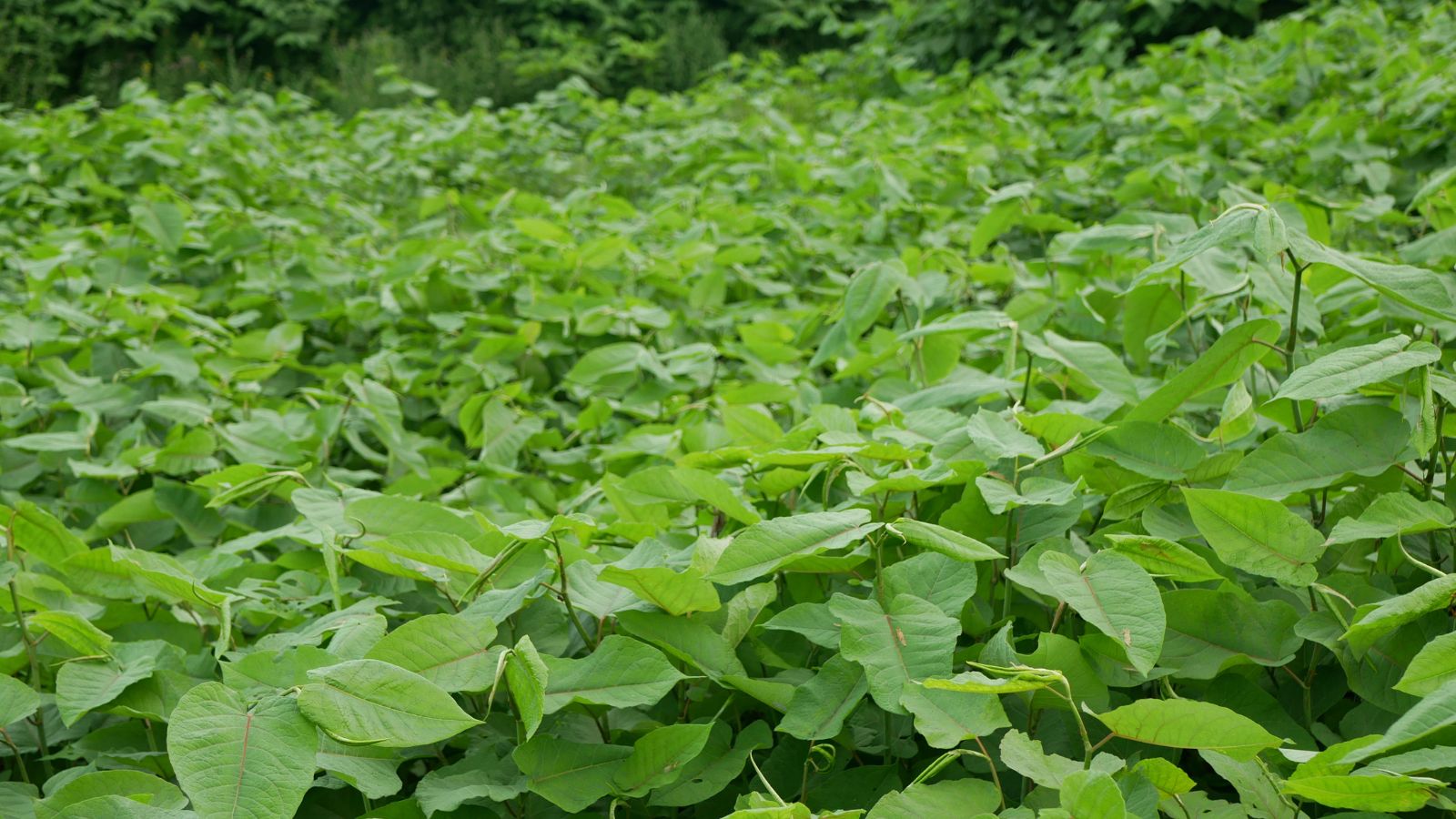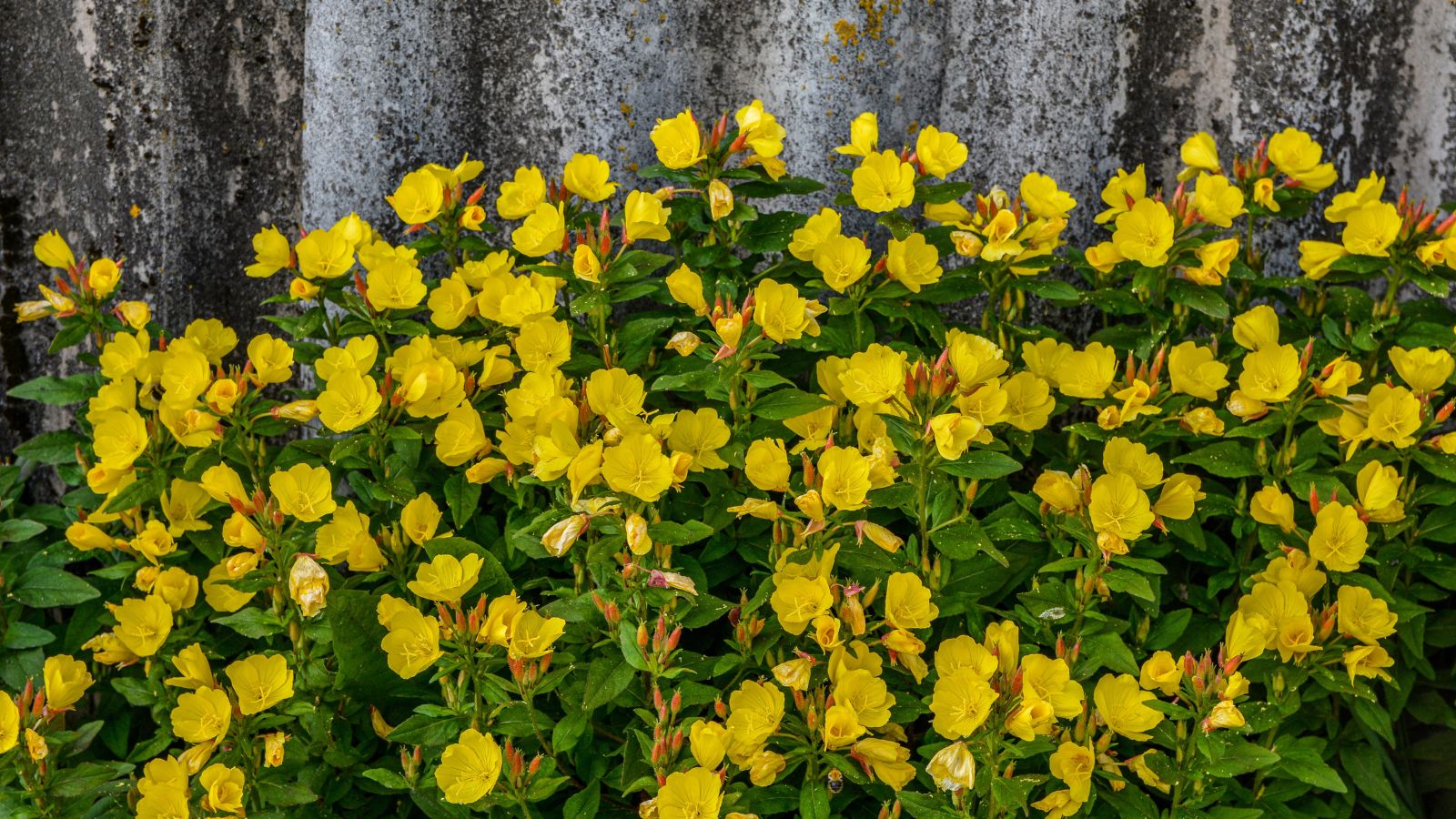When you’re new to growing your own flowers, it’s only natural that you’ll get carried away, planting just about any colorful flower that you think will fit in your flowerbeds. Sure, it’s fun to experiment, but be aware–some of these lovely flowers don’t stay where they’re planted. In fact, they often spread quickly, especially those that are exotic, pushing out other plants and causing havoc in well-maintained landscapes. To avoid such a situation for yourself, here are some seemingly innocent flowers that are actually troublemakers, creeping their way through gardens and beyond.
English Ivy

Starting things off with a garden favorite, it’s English Ivy. Yes, this ivy is commonly admired for its glossy leaves, but it can quickly get out of hand, clinging to walls, fences, trees, and anything else that gets in its way. In fact, it can sometimes become so invasive that it can cause damage. Once rooted, it can be a difficult intruder to eliminate, so be careful when messing around with this otherwise beautiful flower!
Lily of the Valley

Upon first look, you probably think that Lily of the Valley seems delicate and innocent, with its tiny, fragrant flowers. However, it actually spreads stealthily underground through rhizomes, root systems that allow it to multiply fast and chaotically. Sure, its scent can be very appealing, but at the end of the day, this plant won’t hold back in pushing other groundcovers aside, overtaking gardens if not contained.
Creeping Bellflower

Just as its name suggests, the resilient and deceptively charming Creeping Bellflower hides its invasive nature under a violet-blue hue. This plant sends roots deep underground, which allows it to pop up unexpectedly, even when attempts are made to remove it. Known to outcompete surrounding flowers, Creeping Bellflower can become a nightmare for any gardener, so don’t underestimate it.
Yellow Archangel

Another flower that is actually highly invasive is the Yellow Archangel, which can easily blanket a garden bed with its shimmering leaves and yellow flowers. Just like with Lily of the Valley, it appears harmless, but will eventually spread relentlessly in shady spots, choking out less aggressive plants. Once settled, Yellow Archangel’s runners are very difficult to remove, giving it an upper hand against neighboring plants.
Periwinkle (Vinca)

Anyone who has ever grown Periwinkle will know that it sprawls with ease, creating a lush carpet of purple flowers and evergreen leaves. For this reason, people often use it as an aesthetically pleasing form of ground cover, but this can be a big mistake. As with every flower on this list, it spreads so readily that it can suffocate other plants. Worse still, its runners allow it to escape flower beds, creating patches that grow in size each season.
Purple Loosestrife

Next up is the Purple Loosestrife, which is bound to enchant any gardener with its impressively tall spikes of purple flowers. Let it get out of hand, though, and you can expect it to quickly dominate any damp areas of your yard. Originally found near water bodies, this plant aggressively spreads through seeds, displacing native wetland plants and potentially ruining your garden.
Japanese Knotweed

Japanese Knotweed’s fast-growing stems can, impressively, break through concrete, making it notorious among gardeners. Its dense clusters overshadow nearby plants, blocking sunlight and drawing nutrients away from other growth. Ultimately, trying to remove it requires a lot of patience, as even small root fragments left behind will allow it to return with vigor.
Evening Primrose (Oenothera biennis)

This bright bloomer with yellow petals quickly takes over any space it’s allowed to grow. The species Oenothera biennis, in particular, can spread aggressively via seeds and underground stems, dominating garden beds within a season. We can’t deny that it brings a delightful pop of color, but we can’t forget that it also brings trouble by pushing out other flowers that may struggle to compete.
Common Tansy

No gardener can deny that the Common Tansy adds a vibrant palette of yellows to a flowerbed, but it quickly becomes overbearing if not controlled. As with other invasive species on this list, it spreads by seeds and underground roots, forming dense colonies that are challenging to contain. You might think that its strong scent is charming, but you’ll quickly grow sick of it after it starts to reduce the rest of your garden’s biodiversity.
Crown Vetch

With its clusters of pink flowers, Crown Vetch might seem perfect for groundcover, but its invasive tendencies make it problematic. The problem is that this plant’s creeping stems form dense mats, smothering other low-growing plants. As a result, gardeners often find it hard to control, as it re-sprouts from fragments and spreads across vast areas.
Butterfly Bush

Despite its immense appeal to pollinators, Butterfly Bush can outcompete native flowering plants in some regions, especially through prolific seed production. Though admired for its blooms, it can overwhelm local ecosystems, impacting native species that struggle to compete with its rapid growth. Be cautious when planting in regions where its spread is problematic, or you’ll soon regret allowing this seemingly innocent flower into your life.
Moneywort (Creeping Jenny)

Moneywort, also called Creeping Jenny, sends out sprawling runners that cover the ground with ease. Moreover, its round, green leaves, and yellow flowers seem harmless, but it spreads relentlessly in damp soil, often edging out other plants. Removing it can be surprisingly tricky, as even small pieces left behind will regrow and continue spreading. Frankly, you’re probably going to find it easier to not grow this flower at all.
Himalayan Balsam

Tall and striking, Himalayan Balsam’s pink blooms tend to draw a lot of attention, but this plant is highly invasive near water bodies and usually isn’t worth the trouble. Spreading through explosive seed pods, it overtakes banks and wetlands quickly, pushing aside other native plants. Overall, its fast growth can create a monoculture, reducing plant diversity in affected areas.
Goutweed

Goutweed’s variegated leaves might seem ideal for ground cover, yet it forms a dense, spreading mat that quickly gets out of hand. Impressively, this plant’s underground roots allow it to survive attempts at removal, making it notoriously hard to eradicate. Once established, Goutweed can cover large areas, outpacing slower-growing ground plants, so ask yourself–is planting it really worth the hassle?
Lesser Celandine

Another flower that is likely ruining your garden through its invasive tendencies is the Lesser Celandine. We’d have to agree that its yellow flowers brighten up spring, but it’s not worth the views when this plant quickly crowds out native wildflowers. Forming dense mats through tubers, it blankets the ground and limits the growth of other plants–that just isn’t fair.
Siberian Squill

In some cases, you’ll be able to enjoy the delicate blue flowers of the Siberian Squill without too much trouble. However, in the right regions, it can spread easily by seeds and bulbs, creating dense colonies that overshadow smaller plants and ground covers. Once rooted, it becomes challenging to control, especially in gardens and shaded areas where it’s more aggressive. So, do your research, and if your region is riddled with Siberian Squill invasions, you probably shouldn’t contribute to it.
Houttuynia (Chameleon Plant)

Houttuynia’s colorful foliage makes it tempting to plant, but its spreading roots can quickly take over your garden in an invasive manner. Once planted, this tenacious perennial forms thick mats that are nearly impossible to dig out completely, which will cause you a whole world of hassle.
Wild Garlic (Ramsons)

The final flower on our list that is notorious for its invasive nature is the Wild Garlic, which fills the air with its strong scent. Don’t let this put you into a false sense of security, though, as it’s also an aggressive spreader in woodland areas. This plant’s bulbs multiply quickly, covering forest floors and shaded gardens alike. Though edible, its rapid spread can lead to the displacement of native plants in certain regions, making it important to monitor its growth.
